I am trying to combine the results of two SQL (DB2 on IBM bluemix) queries:
The first query creates a timeserie from startdate to enddate:
with dummy(minute) as (
select TIMESTAMP('2017-01-01')
from SYSIBM.SYSDUMMY1 union all
select minute + 1 MINUTES
from dummy
where minute <= TIMESTAMP('2018-01-01')
)
select to_char(minute, 'DD.MM.YYYY HH24:MI') AS minute
from dummy;

The second query selects data from a table which have a timestamp. This data should be joined to the generated timeseries above. The standalone query is like:
SELECT DISTINCT
to_char(date_trunc('minute', TIMESTAMP), 'DD.MM.YYYY HH24:MI') AS minute,
VALUE AS running_ct
FROM TEST
WHERE ID = 'abc'
AND NAME = 'sensor'
ORDER BY minute ASC;

What I suppose to get is a query with one result with contains of two columns:
- first column with the timestamp from startdate to enddate and
- the second with values which are sorted by there own timestamps to the
- first column (empty timestamps=null).
How could I do that?